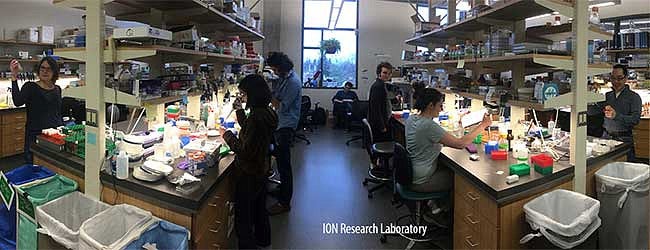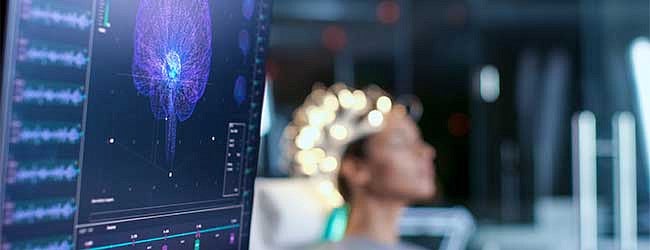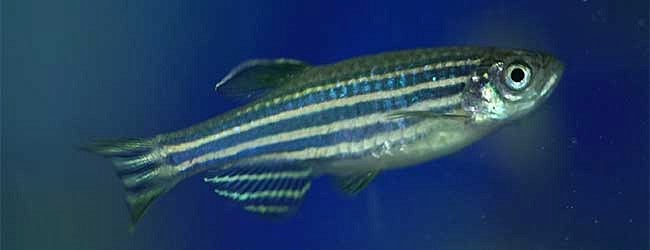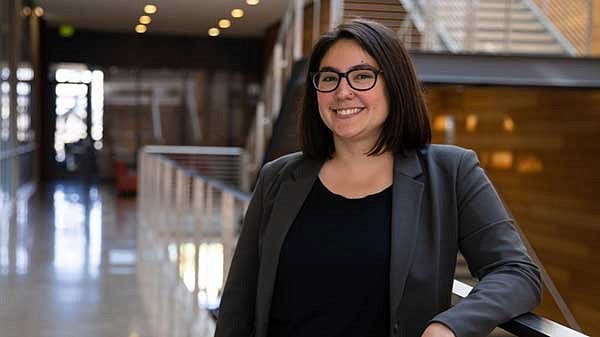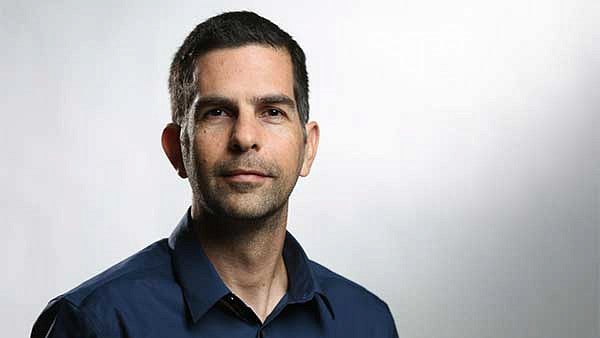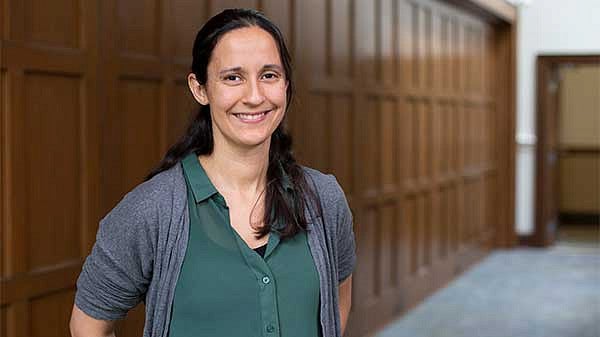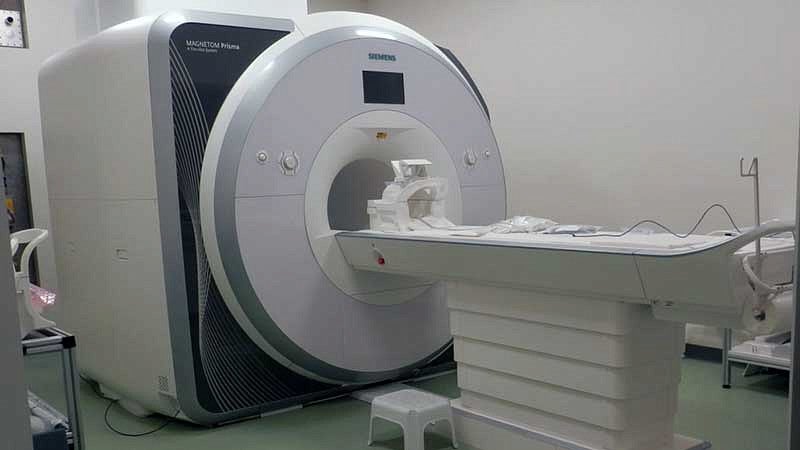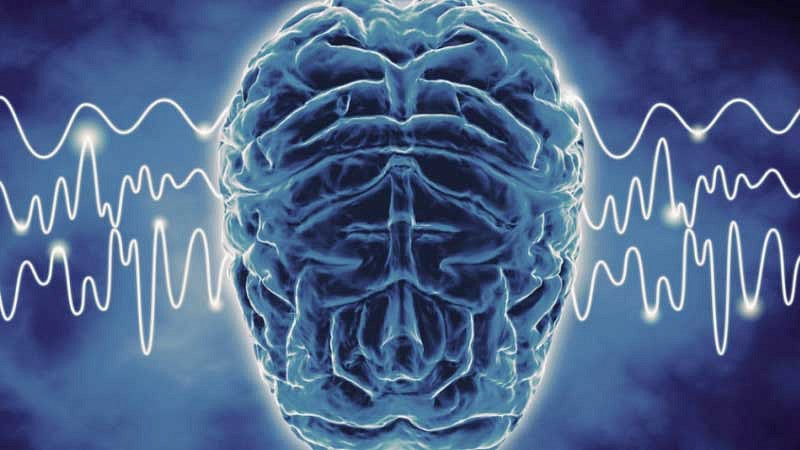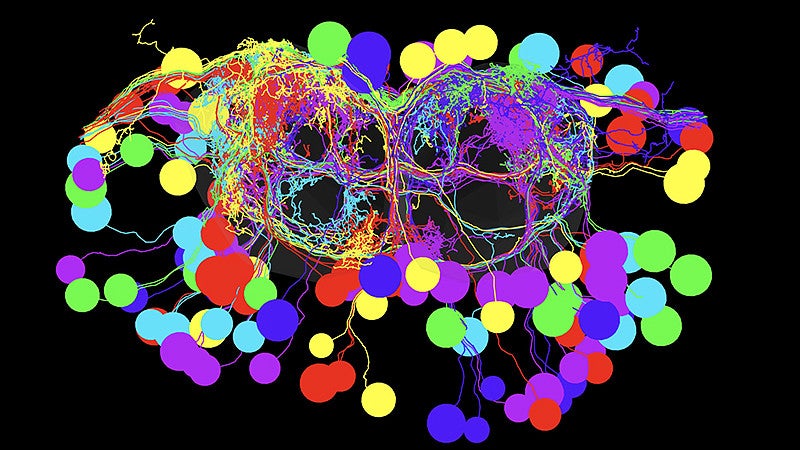A longstanding area of research excellence and a popular new major, neuroscience takes center stage at the University of Oregon
Unifying knowledge from biology, psychology, human physiology, and many other disciplines, neuroscience is a dynamic and growing field with deep roots at the University of Oregon.
In 1979, our Institute of Neuroscience (ION) was founded with the mission to advance knowledge of the nervous system through multidisciplinary collaborations.
In the 2020-21 academic year, neuroscience marks another major milestone on campus: debuting as a new undergraduate major.
“Given the existing faculty excellence in neuroscience at the UO, it seemed like a no-brainer—pun intended—to create a neuroscience major,” says Nicole Dudukovic, senior instructor of psychology, faculty member with the Robert D. Clark Honors College, and director of the new undergrad program.

"My younger brother has Autism Spectrum Disorder, or ASD, and that led to an early awareness and questions in my mind,” she recalls.
“My goal in science classes has always been to understand more about the mechanisms and neural circuits in the brain of ASD. For a while that led me to jumping around majors, but it was an easy choice to make the switch when this new major was announced, because it aligns perfectly with what I want to do in graduate school.”
Students enrolled in the neuroscience major explore the relationship between the brain and behavior. Rooted in the natural sciences, the program also trains students to communicate effectively about neuroscience research and to develop quantitative, analytical, critical-thinking, and technical skills.
The curriculum emphasizes the cooperative, interdisciplinary nature of much work that’s happening in this exciting field.
Neuroscience at the UO
“Neuroscience students need to learn not only theory and methods from multiple fields but also how to collaborate across them,” Dudukovic says.
Questioning the nature of our own minds is among the most ancient of all investigations—while the final frontiers of understanding could represent some of the most astonishing and transformative breakthroughs of the 21st century. The human nervous system is that amazing.
How complex is this puzzle? Our brains alone have about 86 billion neurons, each with around 1,000 connections to other cells. In addition to the central nervous system—comprised of the brain and spinal cord—neuroscientists also study the peripheral nervous system, which encompasses all of the body’s remaining nerves, from their cranial or spinal origins to their motor and sensory endings. The scope of inquiry is literally mind boggling!
Of course, neuroscientists don’t regard the nervous system as anatomy alone. Some neuroscientists create mathematical models or computer simulations to explore biological systems, and others specialize in the study of mental phenomena including behavior, consciousness, learning, and memory.
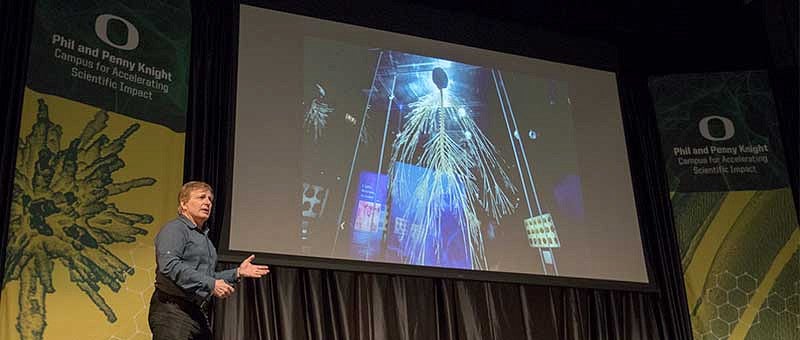
Dudukovic notes that UO’s new major was developed to offer rigorous training that will prepare students for graduate studies or a variety of professional career paths.
“All of our students are encouraged to get hands-on experience and skills working in a neuroscience lab,” she says. “The UO has an established reputation for excellence in neuroscience research, and there are many different labs that undergraduate students can join.”
The new major—the first of its kind at a public university in Oregon—is proving to be a popular choice in its first year, with 77 students already enrolled to pursue a bachelor of science or bachelor of arts in neuroscience.
“As a neuroscience major at the UO, I get the opportunity to gain research experience and learn from dedicated faculty and mentors,” says Minh Nguyen, a senior who plans to apply to medical schools after graduating.
“Neuroscience is such a new and exciting field that had always captivated my interest. It is fascinating to be a part of this emerging journey.”

Neuroscience at the UO
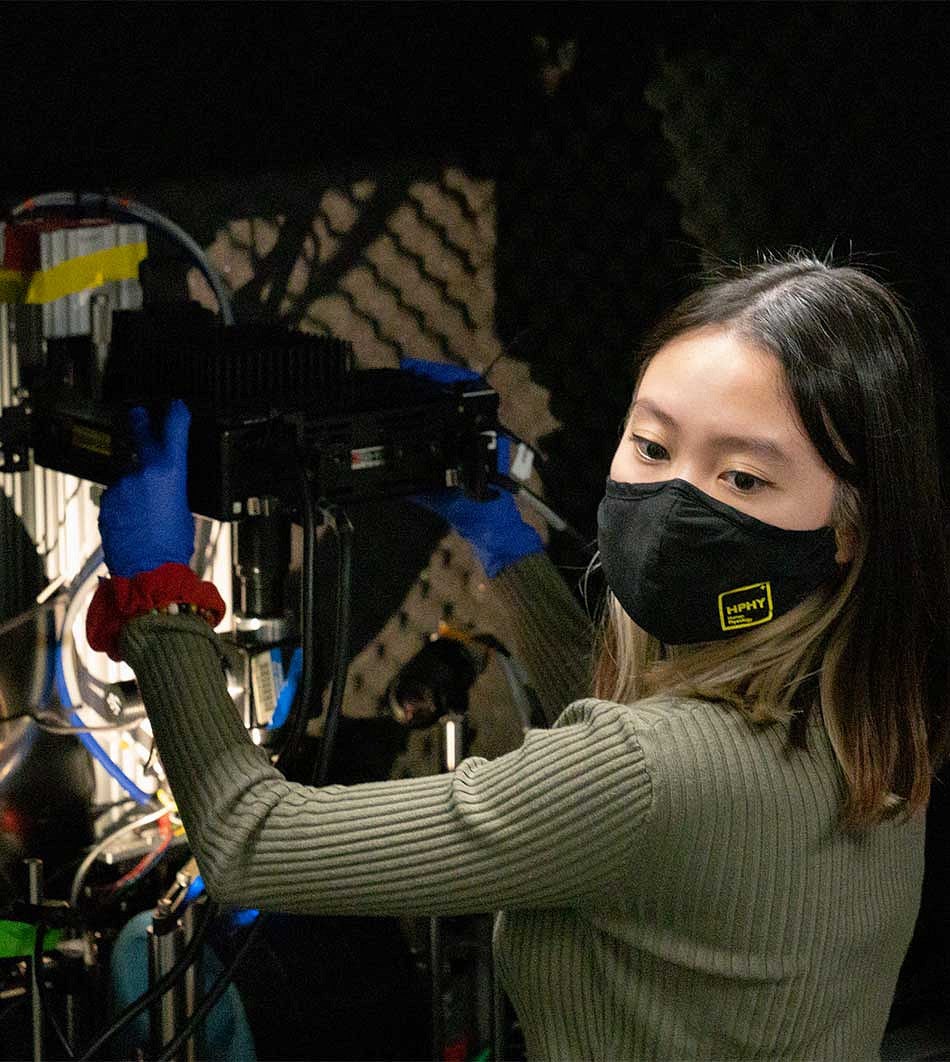
Neuroscience at the UO is a rewarding, interdisciplinary major designed to prepare students for a variety of career paths in healthcare, nonprofits, research, and government.
The curriculum includes rigorous, foundational course work in math, statistics, and the natural sciences. The 18-credit neuroscience core, as well as upper-division elective courses are offered through the departments of biology, psychology, and human physiology. As neuroscience majors, students gain access to award-winning faculty across a variety of academic disciplines.
With a neuroscience degree, students will be prepared to pursue health-related careers, such as medicine, physical therapy, and occupational therapy. Graduates will also be equipped for science-related government, nonprofit, and health industry jobs. Additionally, neuroscience majors will be competitive for graduate programs at research universities.

Administered through the Institute of Neuroscience, the Interdepartmental Neuroscience Graduate Program offers robust training across disciplines. While the majority of students enter the program through the department of biology, students also come from the departments of human physiology, psychology, mathematics, and physics.
The goal of the graduate program is to train students to think independently, creatively, and critically about problems in neuroscience. Our program offers training in a variety of skills that will prepare students for successful careers in research, teaching, policy, or industry.
Additionally, the Center for Translational Neuroscience offers personalized, mentorship-based professional development and training opportunities tailored to graduate, postdoctoral, and early-career scholars.
Why Study Neuroscience? What Lies Ahead?
If you’re like a lot of people, the first thing that comes to mind when you hear “neuroscience” could be “healthcare.” Even beyond the clinic, however, people trained in neuroscience are already playing key roles in many other industries and organizations.
Image
Medicine
Image
Mental Health and Wellness
Image
Business
Image
Government, Law, and Criminal Justice
Image
Technology
Image
Education

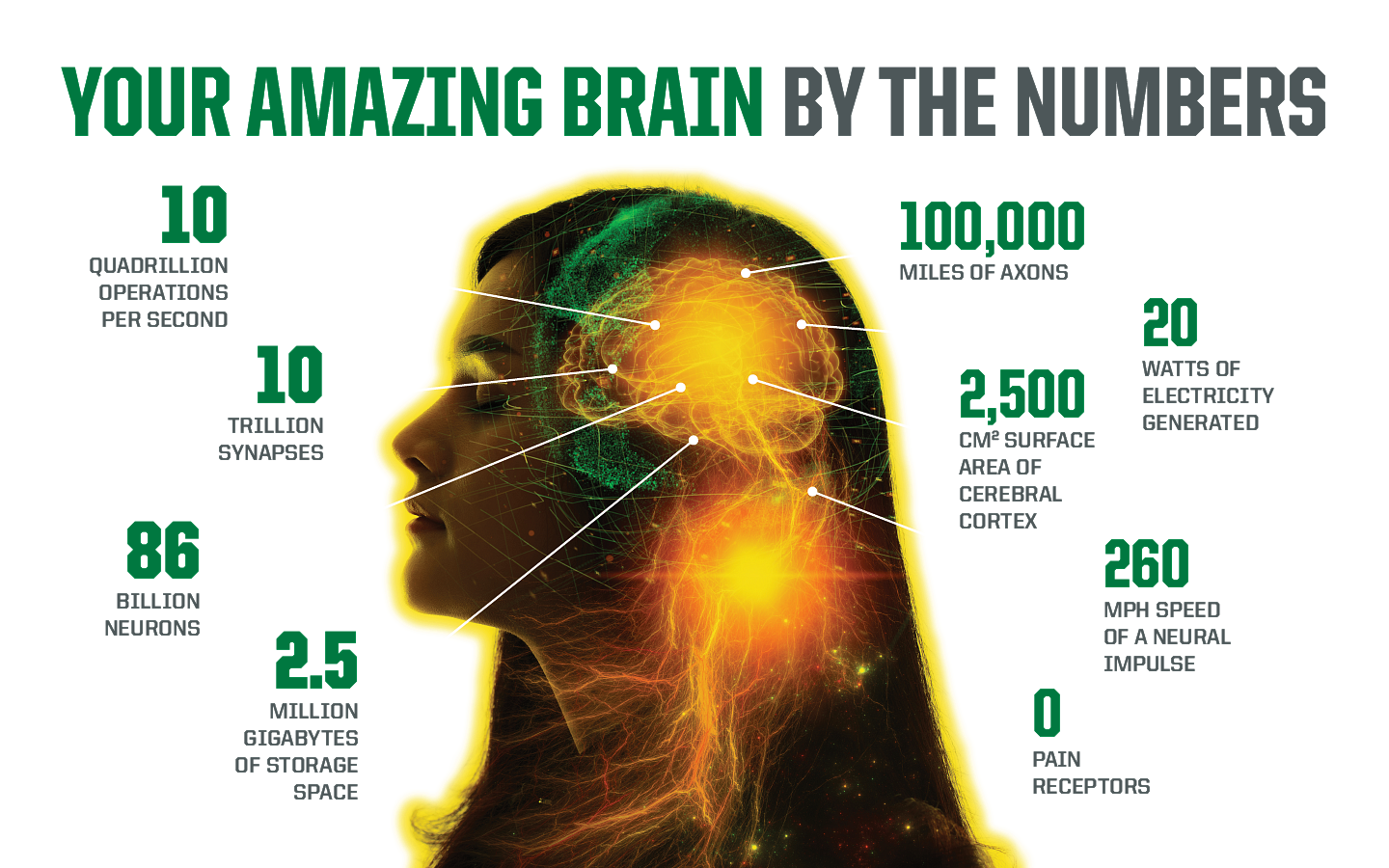

Neuroscience, from the Lab to Real-World Impact
Every day, University of Oregon researchers are making amazing advancements in neuroscience that not only increase knowledge within the academic field, but also have the potential to improve life, health, and society at large.
Neuroscience research at the UO is tackling key questions



